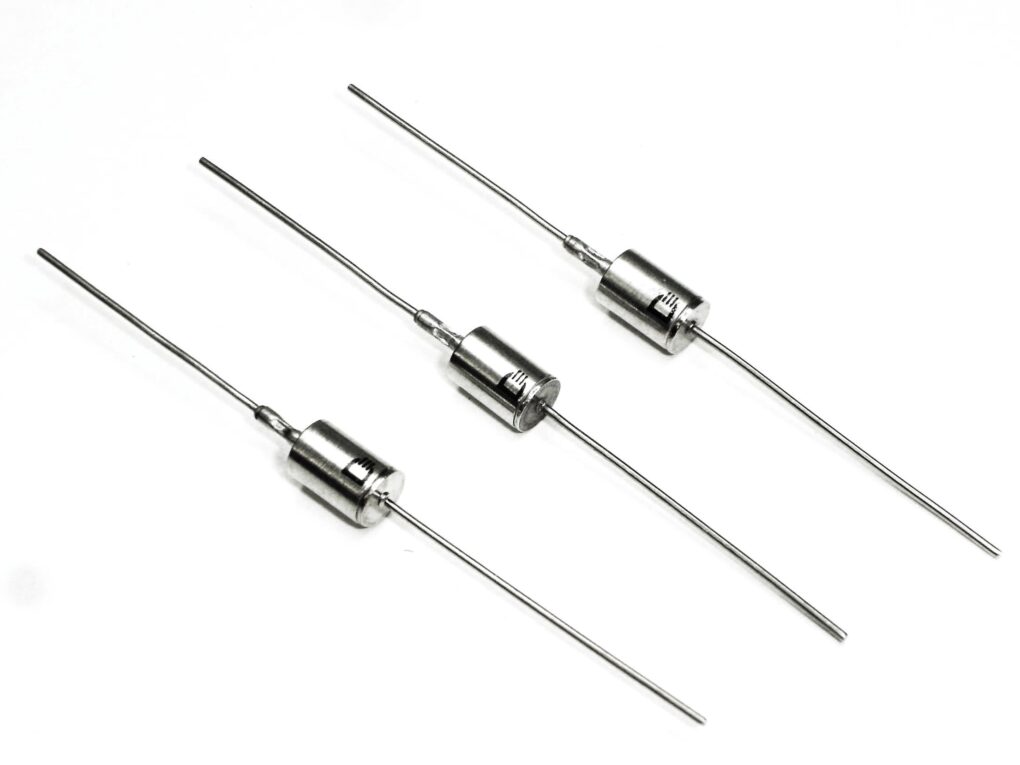Introduction to Transient Voltage Suppressor Diodes
Transient Voltage Suppressor (TVS) diodes are semiconductor devices that are designed specifically to protect electronic circuits from voltage transients induced by electrostatic discharge, inductive load switching and lightning strikes. They function as clamping devices and help reduce voltage surges and spikes below critical levels to protect sensitive components inside circuits. Some key attributes of TVS diodes include their fast response time, controlled breakdown voltage and ability to handle high currents during transient events.
Construction and Working Principle
TVS diodes contain a PN junction formed between a thin P-type semiconductor layer and a thick N-type semiconductor substrate. In their normal non-conducting state, the PN junction acts as an insulator. However, when the voltage amplitude exceeds the breakdown voltage of the junction, it switches to a low-impedance conducting state rapidly. This allows large current surges to bypass around the protected circuit through a low resistance path provided by the Transient Voltage Suppressor Diodes. The breakdown voltage is precisely controlled during manufacturing to protect circuits from typical transient events. Upon removing the surge, the TVS diode resets itself back to the high-impedance blocking state.
Types of Transient Voltage Suppressor Diodes
There are different types of TVS diodes available depending on the intended application and required performance:
Unidirectional TVS Diodes: As the name suggests, these are simple rectifying devices that allow current flow in only one direction. They are optimized for protecting circuits against positive voltage transients.
Bidirectional TVS Diodes: Bidirectional TVS diodes conduct current in both directions, making them suitable for handling positive and negative transient voltage spikes.
High-Power TVS Diodes: Special heavy-duty variants capable of handling large surge currents up to several hundred amps during short-duration transients. Used to protect high-power equipment.
Surface Mount TVS Diodes: SMD packaged TVS diodes suitable for surface-mount technology (SMT) applications due to their compact size. Popular choices for printed circuit boards (PCBs).
Applications of Transient Voltage Suppressor Diodes
Owing to their fast response, ruggedness and space-saving SMD packaging, TVS diodes have become a cost-effective solution for protecting various electronic systems and components from voltage transients. Some common applications include:
– Protection of data and telecommunication lines: Telephone lines, LAN cables, antennas, etc. are prone to large voltage spikes during lightning strikes or inductive switching. TVS diodes safeguard connected equipment.
– Protection of power supply circuits: Key components inside switching mode power supplies and AC adapters require safeguarding from transients present on power mains. TVS diodes clamp voltage to safe levels.
– Protection of microcontroller and microprocessor based systems: Low-voltage logic chips and CPUs inside computers, industrial control panels require TVS diode-based input/output protection.
– Security and alarm system protection: Fire alarms, CCTV cameras, access controls operating outdoors need robust voltage surge suppression using TVS diodes.
– Automotive electronics protection: The harsh automotive environment with inductive loads and bad earthings necessitate TVS diode application in ECUs, infotainment units, charging ports etc.
– Appliance equipment protection: White goods, power tools and other line-operated devices utilize TVS diodes to shield internal circuitry from utility line disturbances.
Parameter Selection and Specifications
Proper selection of TVS diode type and specifications is important to achieve effective protection of electronic systems from transients. Some key factors to consider include:
– Breakdown/clamping voltage – Should exceed maximum circuit operating voltage plus sufficient safety margins.
– Peak pulse current rating – Capacity to pass typical pulse surge currents expected. Depends on application.
– Response time – Ultra-fast devices required for high-speed data lines; fast types for other general circuits.
– Lead length and package style – Influence transient suppression effectiveness; surface mount ideal for high-speed circuits.
– Bidirectional vs unidirectional – Application specific; bidirectionals used where both polarities need protection.
Making correct choices based on probable surge waveforms, system operating parameters and component constraints ensures optimum TVS diode performance. Standard industry specifications provide comprehensive testing and ratings guidance.
*Note:
1. Source: Coherent Market Insights, Public sources, Desk research
2. We have leveraged AI tools to mine information and compile it.

